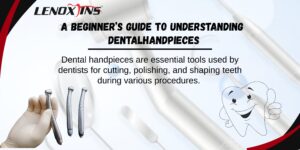Demystifying Dental Extraction Forceps Varieties
- lenoxinstro
- October 17, 2024
- Dental Forceps, Dental Surgical

how to identify extraction forceps?Table Of Contents:
- Key Takeaways
- Introduction to Dental Extraction Forceps
- Classification of Dental Extraction Forceps
- Maxillary (Upper Jaw) Extraction Forceps Types
- Mandibular (Lower Jaw) Extraction Forceps Types
- Specialized Dental Forceps for Specific Procedures
- Factors Influencing Forceps Selection
- Frequently Asked Questions
- Conclusion
Dental extraction forceps are essential instruments in tooth removal procedures. This comprehensive guide explores the various types of dental extraction forceps, their specific uses, and how they differ for upper and lower jaw extractions. By understanding the different forceps available, dental professionals can select the most appropriate tool for each extraction, reducing risks and improving patient outcomes. Learn about maxillary and mandibular forceps types, specialized instruments for specific procedures, and the key factors influencing forceps selection in dental practice.
Key Takeaways
- Dental extraction forceps are essential tools for removing teeth efficiently while minimizing gum injury
- Proper forceps selection is crucial for successful dental extractions and minimizing complications
- Maxillary and mandibular forceps are designed differently to address specific anatomical differences in upper and lower teeth
- Specialized forceps cater to specific extraction procedures, enhancing precision and patient comfort
- Ergonomics, material quality, and maintenance practices are important factors in selecting dental extraction forceps
Introduction to Dental Extraction Forceps

Dental extraction forceps are essential tools in oral and maxillofacial surgery, specifically designed for removing teeth. Selecting the appropriate forceps is crucial for efficient molar extraction while minimizing gum injury. This section explores the role of extraction forceps in dentistry and the importance of proper tool selection for successful dental extraction procedures.
Understanding the Role of Extraction Forceps in Dentistry
Extraction forceps play a crucial role in dentistry, serving as the primary tool for tooth removal. These specialized instruments allow dentists to grasp and manipulate teeth within the patient‘s mouth, facilitating precise extraction. When used in conjunction with elevators, extraction forceps enable the removal of various types of teeth, including wisdom teeth. The beak of the forceps is designed to fit securely around the tooth crown, providing the necessary leverage for efficient extraction:
- Secure grip on tooth crown
- Facilitate controlled movement
- Minimize damage to surrounding tissues
- Enable removal of various tooth types
- Work in tandem with elevators for complex extractions
Importance of Selecting Appropriate Forceps for Procedures
Selecting appropriate forceps for dental extraction procedures is crucial for ensuring successful outcomes and minimizing complications. The right forceps design enables precise tissue manipulation, proper grip on the tooth, and optimal leverage for extraction from the mandible or maxilla. Proper selection also helps maintain oral hygiene standards during surgery and reduces the risk of prolonged anesthesia or extended recovery time. Dentists must consider factors such as tooth location, root morphology, and patient-specific conditions when choosing extraction forceps to ensure efficient and safe procedures.
The world of dental extraction forceps is vast. Let’s explore how these tools are classified for different tasks.
Classification of Dental Extraction Forceps

Dental extraction forceps are classified based on their design and intended use. This section examines the differences between maxillary and mandibular forceps, universal and specific forceps, and variations in handle designs. Understanding these classifications helps dental professionals select the appropriate stainless steel surgical instruments to minimize pain, prevent infection, and effectively sever the periodontal ligament during tooth extraction procedures. universal atraumatic extraction forceps elevators set
Maxillary vs. Mandibular Forceps
Maxillary and mandibular forceps are designed to address the specific anatomical differences between upper and lower teeth. Maxillary forceps typically feature curved beaks to accommodate the buccal bone prominence, while mandibular forceps have straighter beaks for better access to lower teeth. Both types are crafted from high-quality steel to withstand the forces required for extracting teeth affected by disease or decay. The forceps‘ design allows for a secure grip on the tooth crown, facilitating efficient extraction without the need for additional tools like syringes.
Universal vs. Specific Forceps
Universal forceps are designed to extract multiple tooth types, offering versatility in dental procedures. In contrast, specific forceps are tailored for particular teeth or regions, such as the maxilla or mandible. While universal forceps provide flexibility, specific forceps offer precision for challenging extractions. Dentists may use a combination of forceps types, along with tools like rongeurs, retractors, and scalpels, to ensure successful tooth removal. The choice between universal and specific forceps often depends on the complexity of the extraction and the need for local anesthetic.
Variations in Handle Designs and Mechanics
Dental extraction forceps feature various handle designs and mechanics to enhance ergonomics and efficiency during procedures. Some forceps incorporate titanium components for improved durability and reduced weight. Handle variations include smooth, textured, or ergonomic grips to prevent slippage and reduce operator fatigue. Certain designs integrate scissor-like mechanisms for improved control when manipulating the periosteum. These variations aim to minimize complications such as alveolar osteitis while providing optimal leverage for tooth extraction:
- Smooth handles for easy cleaning
- Textured grips for enhanced control
- Ergonomic designs to reduce hand strain
- Titanium components for lightweight durability
- Scissor-like mechanisms for precise manipulation
Dental extraction forceps come in various shapes and sizes. Understanding the different types for the upper jaw is crucial for effective procedures.
Maxillary (Upper Jaw) Extraction Forceps Types

Maxillary extraction forceps are designed specifically for upper jaw procedures, ensuring patient safety and efficient tooth removal. This section explores various types of forceps used for anterior teeth, premolars, molars, and wisdom teeth extractions. Surgeons utilize these specialized instruments as levers to extract teeth, including impacted wisdom teeth, while maintaining proper technique and minimizing complications.
Forceps for Anterior Teeth Extractions
Forceps for anterior teeth extractions in the maxillary jaw are designed with specific features to ensure precise and efficient removal. These instruments typically have a bayonet shape, allowing for better access to the front teeth. Dental professionals place these forceps on a sterilized tray alongside other essential tools before administering local anesthesia. The forceps‘ beaks are narrower and more pointed compared to those used for posterior teeth, enabling a secure grip on the slender roots of incisors and canines. Proper sterilization of these instruments is crucial to maintain hygiene standards and prevent infection during the extraction procedure.
Premolar Extraction Forceps
Premolar extraction forceps for the maxillary jaw are designed with specific features to accommodate the unique anatomy of upper premolars. These forceps typically have beaks with a slight curve to fit around the tooth’s crown and provide a secure grip. The design helps minimize the risk of excessive bleeding during extraction. Dental professionals use these specialized Forceps: Dental Surgical instruments to apply controlled force, reducing the likelihood of tooth fracture or damage to surrounding tissues. The following table illustrates the key features of maxillary premolar extraction forceps:
| Feature | Description |
|---|---|
| Beak Design | Slightly curved to fit premolar crown |
| Grip | Secure to minimize slippage and control blood flow |
| Handle | Ergonomic for improved control and reduced hand fatigue |
| Material | Stainless steel for durability and easy sterilization |
Molar Extraction Instruments
Molar extraction instruments for the maxillary jaw are designed to accommodate the larger size and multiple roots of upper molars. These forceps typically feature wider beaks with pronounced curvatures to fit around the tooth‘s crown and provide a secure grip. The handles are often longer to offer increased leverage, allowing dentists to apply controlled force during extraction. Maxillary molar forceps may also include specific designs for right and left molars, ensuring optimal positioning and reducing the risk of complications during the procedure.
Specialized Forceps for Wisdom Teeth
Specialized forceps for maxillary wisdom teeth extraction are designed to address the unique challenges posed by these posterior molars. These forceps feature robust beaks with a pronounced curve to accommodate the tooth‘s position and anatomy. The handles are typically longer, providing enhanced leverage for removing impacted or partially erupted wisdom teeth. Dentists often use these forceps in conjunction with other specialized instruments to ensure safe and efficient extraction:
- Curved beaks for better access to posterior region
- Longer handles for increased leverage
- Reinforced design to withstand higher forces
- Specific right and left variations for optimal positioning
- Compatible with other wisdom tooth extraction tools
The upper jaw forceps have their place. Now, let’s move to the lower jaw and its unique tools.
Mandibular (Lower Jaw) Extraction Forceps Types

Mandibular extraction forceps are designed for lower jaw procedures, addressing the unique anatomy of the mandible. This section examines specialized instruments for incisors, canines, premolars, and molars, as well as tools for impacted teeth. Understanding these forceps types helps dental professionals select the appropriate instruments for efficient and safe lower jaw extractions.
Instruments for Incisors and Canines
Mandibular forceps for incisors and canines feature narrow, straight beaks designed to fit the slender roots of these teeth. These instruments provide a secure grip on the tooth crown while minimizing damage to surrounding tissues. Dentists use these forceps in conjunction with elevators to loosen the tooth before extraction, ensuring efficient removal with reduced risk of complications. The following table outlines key characteristics of mandibular incisor and canine extraction forceps:
| Feature | Description |
|---|---|
| Beak Design | Narrow, straight for precise fit |
| Handle | Ergonomic for improved control |
| Material | Stainless steel for durability |
| Application | Lower incisors and canines |
Premolar Extraction Tools
Mandibular premolar extraction tools are designed with specific features to accommodate the unique anatomy of lower premolars. These forceps typically have narrower beaks compared to those used for molars, allowing for a precise fit around the tooth crown. The handles are often shorter than those used for maxillary premolars, providing better control in the confined space of the lower jaw. Dental professionals use these specialized instruments to apply controlled force, reducing the risk of root fracture or damage to surrounding tissues during extraction procedures.
Molar Extraction Forceps
Mandibular molar extraction forceps are designed with robust, wide beaks to accommodate the larger size and multiple roots of lower molars. These forceps typically feature a pronounced curve and longer handles to provide increased leverage for efficient tooth removal. Dental professionals select specific forceps for right or left mandibular molars to ensure optimal positioning and reduce the risk of complications during extraction procedures.
Specialized Forceps for Impacted Teeth
Specialized forceps for impacted teeth in the mandible are designed to address the unique challenges of extracting teeth that have not fully erupted or are positioned at abnormal angles. These forceps feature reinforced beaks with enhanced gripping surfaces to provide a secure hold on partially exposed tooth structures. Dental professionals often use these instruments in conjunction with surgical elevators and bone removal tools to access and extract impacted teeth, particularly wisdom teeth. The following table outlines key features of specialized forceps for impacted mandibular teeth:
| Feature | Description |
|---|---|
| Beak Design | Reinforced with enhanced gripping surfaces |
| Handle Length | Extended for improved leverage |
| Compatibility | Designed to work with surgical elevators |
| Application | Impacted mandibular teeth, especially wisdom teeth |
Beyond the lower jaw, a world of specialized forceps awaits. These tools, each designed for unique tasks, open new possibilities in dental procedures.
Specialized Dental Forceps for Specific Procedures

Specialized dental forceps cater to specific extraction procedures, enhancing precision and patient comfort. This section explores pediatric extraction forceps designed for children’s teeth, surgical extraction instruments for complex cases, root tip extraction forceps for removing remnants, and atraumatic extraction tools that minimize tissue damage. Understanding these specialized instruments helps dental professionals select the most appropriate tools for various extraction scenarios.
Specialized dental forceps cater to specific extraction procedures, enhancing precision and patient comfort. This section explores pediatric extraction forceps designed for children’s teeth, surgical extraction instruments for complex cases, root tip extraction forceps for removing remnants, and atraumatic extraction tools that minimize tissue damage. Understanding these specialized instruments helps dental professionals select the most appropriate tools for various extraction scenarios.
Pediatric Extraction Forceps
Pediatric extraction forceps are specially designed instruments for removing primary teeth in children. These forceps feature smaller, more delicate beaks to accommodate the size and shape of deciduous teeth, ensuring a secure grip without causing excessive pressure on surrounding tissues. Dental professionals use these instruments in conjunction with gentle extraction techniques to minimize discomfort and anxiety in young patients during tooth removal procedures. Pediatric extracting forceps
Surgical Extraction Instruments
Surgical extraction instruments are specialized forceps designed for complex tooth removal procedures. These tools feature robust construction and enhanced gripping surfaces to handle impacted teeth, fractured roots, or teeth with unusual anatomical variations. Dental surgeons utilize these instruments in conjunction with flap elevation and bone removal techniques to access and extract teeth that cannot be removed through standard procedures. Surgical extraction forceps often have longer handles for improved leverage and control during intricate maneuvers.
Root Tip Extraction Forceps
Root tip extraction forceps are specialized dental instruments designed for removing fractured or retained root tips after tooth extraction. These forceps feature narrow, elongated beaks with sharp tips that can reach deep into the socket to grasp small root fragments. Dental professionals use these instruments in conjunction with careful manipulation techniques to minimize trauma to surrounding tissues and reduce the risk of complications during root tip removal procedures.
Atraumatic Extraction Tools
Atraumatic extraction tools are designed to minimize tissue damage and preserve alveolar bone during tooth removal procedures. These specialized forceps feature tapered beaks with non-slip surfaces that allow for a secure grip on the tooth while reducing the risk of root fracture or socket wall compression. Dental professionals use atraumatic extraction tools in conjunction with gentle rocking motions to gradually loosen the tooth, preserving the surrounding bone and soft tissues. The following table outlines key features of atraumatic extraction tools:
| Feature | Description |
|---|---|
| Beak Design | Tapered with non-slip surfaces |
| Grip | Secure without excessive pressure |
| Technique | Gentle rocking motion for gradual loosening |
| Benefit | Preservation of alveolar bone and soft tissues |
Choosing the right forceps is crucial. Many factors influence this decision, and understanding them can make all the difference. Universal atraumatic extraction forceps
Factors Influencing Forceps Selection

Selecting appropriate dental extraction forceps depends on several factors. This section examines anatomical considerations of teeth and jaws, material and design features of forceps, ergonomics for practitioner comfort, and maintenance practices. Understanding these factors helps dental professionals choose the most suitable instruments for efficient and safe tooth extraction procedures.
Anatomical Considerations of Teeth and Jaws
Anatomical considerations of teeth and jaws play a crucial role in selecting appropriate dental extraction forceps. The shape, size, and position of teeth, along with the structure of the surrounding alveolar bone, influence the choice of forceps design. Dentists must consider root morphology, tooth angulation, and potential anatomical variations to ensure optimal grip and leverage during extraction procedures. Understanding these factors helps dental professionals minimize the risk of complications and achieve efficient tooth removal while preserving surrounding tissues.
Material and Design Features of Forceps
The material and design features of dental extraction forceps significantly influence their performance and durability. High-quality stainless steel remains the preferred material for its strength, corrosion resistance, and ease of sterilization. Modern forceps may incorporate titanium components to reduce weight without compromising strength. Design features such as serrated beaks, ergonomic handles, and specialized curvatures enhance grip, control, and efficiency during extraction procedures. dental extraction forceps
Ergonomics and Practitioner Comfort
Ergonomics and practitioner comfort are crucial factors in selecting dental extraction forceps. Well-designed forceps with ergonomic handles reduce hand fatigue and strain during prolonged procedures, allowing dentists to maintain precise control. The weight distribution, grip texture, and handle shape all contribute to overall comfort and efficiency. Dental professionals often prefer forceps with balanced weight and customized grip options to accommodate individual preferences and hand sizes, ensuring optimal performance during tooth extraction procedures.
Maintenance and Sterilization Practices
Proper maintenance and sterilization practices significantly influence the selection of dental extraction forceps. Dental professionals prioritize instruments that withstand repeated sterilization cycles without compromising structural integrity or performance. High-quality stainless steel forceps remain popular due to their durability and resistance to corrosion during autoclaving. Regular inspection for signs of wear, proper cleaning protocols, and adherence to manufacturer-recommended sterilization procedures ensure the longevity and safety of extraction forceps, ultimately impacting their selection for dental practices.
Frequently Asked Questions
What are the main types of dental extraction forceps?
Dental extraction forceps come in various types designed for specific teeth and procedures. Common types include upper and lower universal forceps, molar forceps, wisdom tooth forceps, root forceps, and pediatric forceps. Each type is tailored to provide optimal grip and leverage for different tooth extractions.
How do maxillary and mandibular extraction forceps differ?
Maxillary and mandibular extraction forceps differ in their design to match the specific anatomy of upper and lower teeth. Maxillary forceps have straighter beaks for easier access to upper teeth, while mandibular forceps feature curved beaks to accommodate the shape of lower teeth and jawbone. Deep Gripping Extracting Forceps
What factors should dentists consider when selecting extraction forceps?
Dentists should consider the tooth‘s location, size, and shape when selecting extraction forceps. The patient‘s anatomy, potential complications, and the forceps‘ design and quality are also crucial factors. Proper forceps selection enhances efficiency, reduces patient discomfort, and minimizes the risk of procedural complications.
Are there specialized forceps for specific dental extraction procedures?
Yes, specialized forceps exist for various dental extraction procedures. These include wisdom tooth forceps, root tip forceps, and pediatric forceps. Each type is designed to fit specific tooth shapes, sizes, and positions in the mouth, ensuring more efficient and less traumatic extractions for patients.
How are dental extraction forceps classified?
Dental extraction forceps are classified based on their design and intended use. They are categorized by tooth type (anterior, premolar, or molar), jaw location (maxillary or mandibular), and specific tooth features. Some forceps are universal, while others are specialized for particular extractions or dental conditions. For example, extracting forceps premolars are designed specifically for the extraction of premolar teeth.
Conclusion
Dental extraction forceps are essential tools in oral surgery, requiring careful selection to ensure efficient and safe tooth removal procedures. Understanding the various types of forceps, including those designed for maxillary and mandibular teeth, as well as specialized instruments for specific procedures, enables dental professionals to choose the most appropriate tools for each case. Factors such as anatomical considerations, material and design features, ergonomics, and maintenance practices play crucial roles in forceps selection, ultimately influencing the success of extractions and patient outcomes. By mastering the comprehensive range of dental extraction forceps and their applications, dental clinics can enhance their procedural efficiency, minimize complications, and provide optimal care for their patients.





